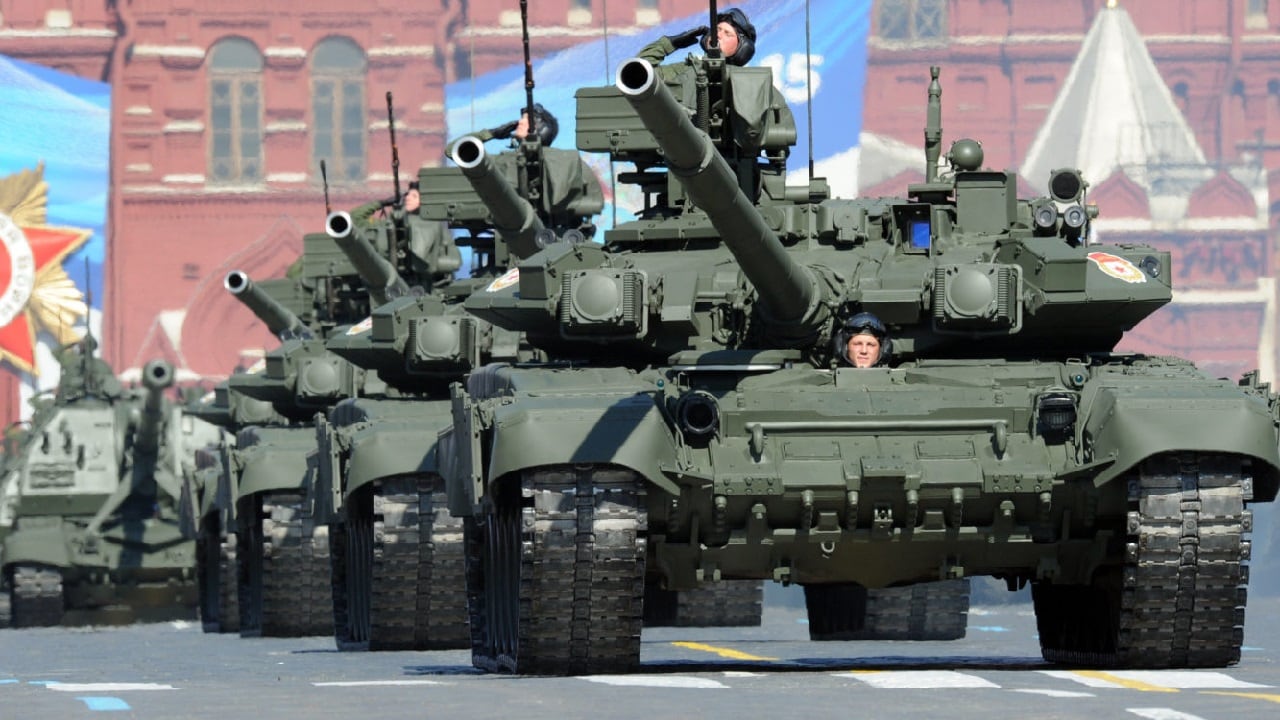Are drones and anti-tank missiles making tanks obsolete?
You’ve seen the photos and videos that have documented the numerous mangled and destroyed Russian tanks that have littered the battlefield. The Bayraktar TB2 combat drone and the Javelin anti-tank missile have been devastating to Russian armor. The tank’s vulnerable turret is no match for missiles. Antitank systems are truly raining death from above.
1945 has chronicled attempts by the Russians to protect their tanks from these types of missiles. Vladimir Putin’s forces have built iron cages above tank turrets to block the downward trajectory of anti-tank munitions. These countermeasures have not been effective.
Astounding Russia Losses
As of March 13, the Ukrainians have lost 389 tanks and 1,249 armored personnel carriers, according to the Ukrainian ministry of defense quoted in the Kyiv Independent. While these numbers are not independently confirmed, it is safe to say that the Russians have seen hundreds of tanks destroyed.
Worth the Cost?
In 2020, Army Technology web magazine conducted a survey and asked whether tanks are a worthwhile investment. They asked over 6,000 respondents. 74 percent of those surveyed said that tanks indeed were a worthwhile investment while 26 percent said they were not.
The poll concluded that during counter-insurgency and counter-terror fights in Iraq and Afghanistan the main battle tank played less of a role, and it risked becoming obsolete. But due to the great power resurgence of Russia and China – both countries that have large-scale armored forces – the tank was seen as more important.
But Here Come the Ukrainian Forces
The Russian invasion of Ukraine may have changed that sentiment again. Russian tanks are being obliterated throughout the country. The use of stand-off missiles and drones by the Ukrainians have introduced a new wrinkle in armored maneuver warfare – one that has changed viewpoints on what it means to have a tank in combat.
Marines Ditch Their Armor
The U.S. Marine Corps was so sure that this change in warfare would make tanks expendable that they have retired many of their Abrams tanks and the force plans to go tankless to concentrate on their maritime amphibious mission. Marine tankers have been asked to leave the service, re-class into another military occupational specialty, or join the army.
Perhaps the marines are looking smart because the war in Ukraine is showing the tank and infantry fighting vehicle is becoming redundant. One reason for armored vehicles’ difficulty in Ukraine has been the Bayraktar TB2 combat drone.
Bayraktar Drone Making Piecemeal of the Russians
This unmanned system is proving deadly to the tank. The Bayraktar TB2 is Turkish-made, and the Ukrainians have about 50 of the drones with more on the way. Each aircraft has four laser-guided missiles.
The drone can fly for around 24 hours with a ceiling of 25,000 feet. Drone operators can be up to 185-miles away. The payload is 121 pounds with a 105 horse-power engine. Its top speed is around 80 miles per hour.
The Bayraktar is proving that it can avoid Russian radar and jamming equipment. But their success also is due to the questionable tactics from the Russian as the invaders do not always protect their armored columns with surface-to-air missiles and other types of air defense systems.
Despite the success of the Bayraktar, I don’t believe the tank should be given its last rights. Countries will learn lessons from the war in Ukraine and strengthen the armor along the top of the turret. Tactics will also improve. U.S. brigade combat teams will use their own drones to counter the enemy and better sniff out attacks from remotely-piloted vehicles. Thus, the tank will still remain a mainstay in modern combat.
Now serving as 1945’s Defense and National Security Editor, Brent M. Eastwood, PhD, is the author of Humans, Machines, and Data: Future Trends in Warfare. He is an Emerging Threats expert and former U.S. Army Infantry officer. You can follow him on Twitter @BMEastwood.

